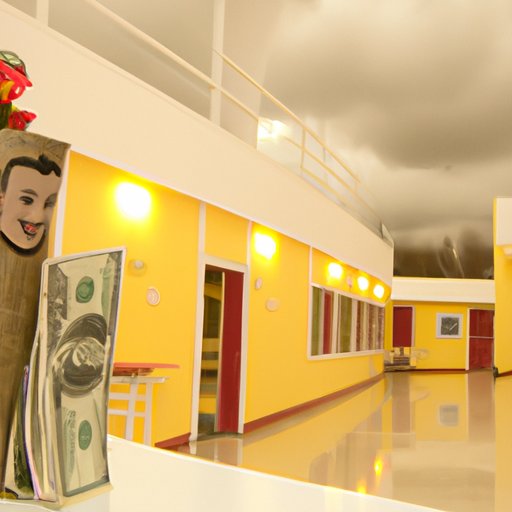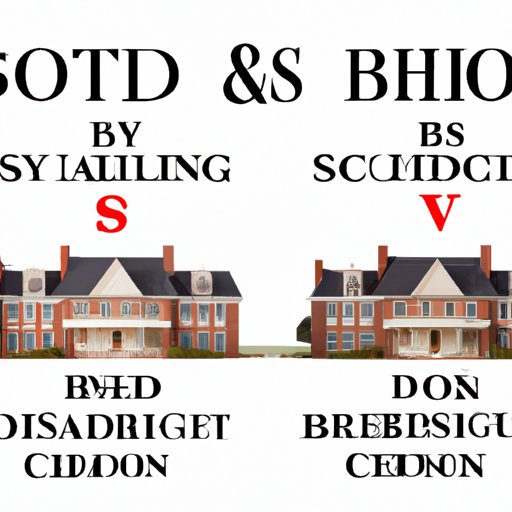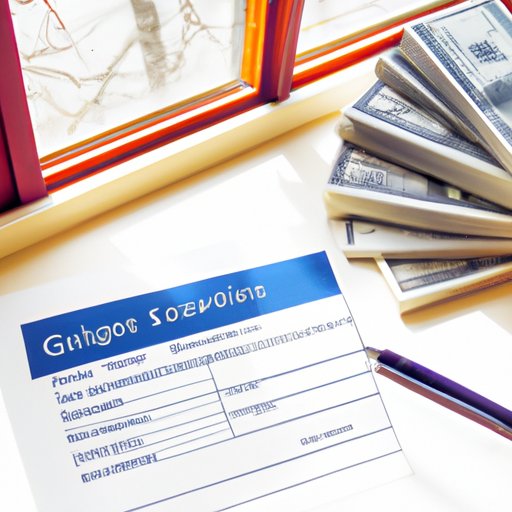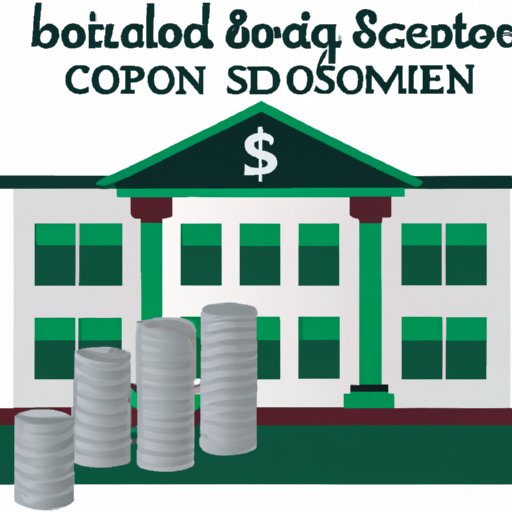Introduction
The cost of boarding school can be intimidating for many families. It is important to understand the various costs associated with attending a boarding school in order to make an informed decision about whether or not it is a feasible option. This article will provide an overview of the typical costs associated with attending a boarding school, including tuition, room and board, financial aid options, additional fees, and more.

Analyzing Typical Tuition Costs at Boarding Schools
Tuition is the primary cost associated with attending a boarding school. The amount of tuition varies depending on the type of school, its location, and other factors. There are several types of tuition plans available, including full-pay, installment plans, and need-based financial aid.
Full-pay tuition requires payment of the full amount of tuition up front. Some schools may offer discounts for paying the full amount in advance. Installment plans allow students to pay tuition in monthly or quarterly installments over the course of the school year. Need-based financial aid may also be available to reduce tuition costs for those who qualify.
According to a survey conducted by the National Association of Independent Schools, the average tuition at a private day school in 2019-2020 was $17,843, while the average tuition at a private boarding school was $53,936. However, tuition costs can vary significantly based on the type of school and its location. For example, a survey conducted by Private School Review found that the average annual tuition at a Catholic boarding school was $19,744, while the average annual tuition at a non-sectarian boarding school was $51,945.
Breaking Down the Cost of Room and Board at Boarding Schools
In addition to tuition, boarding schools typically charge separate fees for room and board. These fees cover the cost of housing and meals for students. Different types of room and board packages are available, ranging from basic dormitory-style housing and cafeteria meals to luxurious suites and gourmet cuisine.
The cost of room and board varies depending on the type of package chosen. According to the National Association of Independent Schools, the average room and board fee for private boarding schools in 2019-2020 was $14,787. However, this cost can vary significantly depending on the type of school and the room and board package chosen.
For example, a survey conducted by Private School Review found that the average annual room and board fee at a Catholic boarding school was $6,995, while the average annual room and board fee at a non-sectarian boarding school was $15,583.
Exploring Financial Aid Options to Reduce Boarding School Costs
Financial aid can be used to help reduce the cost of attending a boarding school. Different types of financial aid are available, including need-based aid, merit-based aid, and scholarships. Eligibility requirements and application processes vary depending on the type of aid and the school offering it.
Need-based financial aid is awarded based on demonstrated financial need. Merit-based financial aid is awarded based on academic or extracurricular achievements. Scholarships are typically awarded based on a combination of financial need and academic or extracurricular achievement. To apply for any type of financial aid, students must complete the Free Application for Federal Student Aid (FAFSA) and submit it to the school.
Examining Additional Fees Beyond Tuition for Boarding Schools
In addition to tuition and room and board fees, boarding schools typically charge additional fees for a variety of services and activities. These fees can include charges for textbooks, laboratory supplies, technology fees, field trips, and extracurricular activities. The amount of these fees varies depending on the type of school and the services and activities chosen.
To reduce additional fees, it is important to research the services and activities offered by the school and determine which ones are necessary for the student. Many schools offer discounts for purchasing textbooks, laboratory supplies, and other materials in bulk. Additionally, some schools offer payment plans for additional fees, allowing students to spread out the cost over several months.

Comparing the Cost of Boarding Schools vs. Day Schools
When comparing the cost of boarding schools to day schools, it is important to consider all of the associated costs, including tuition, room and board, and additional fees. While the tuition costs at a boarding school may be higher than a day school, the costs of room and board and additional fees may be lower, since they are not applicable to day schools.
A survey conducted by Private School Review found that the average annual tuition at a Catholic day school was $11,357, while the average annual tuition at a Catholic boarding school was $19,744. Similarly, the average annual room and board fee at a non-sectarian boarding school was $15,583, while the average annual room and board fee at a non-sectarian day school was $0. Ultimately, the cost of attending a boarding school depends on the type of school and the services and activities chosen.

Investigating Scholarships and Grants to Help Cover Boarding School Expenses
Scholarships and grants are another way to help reduce the cost of attending a boarding school. Scholarships are typically awarded based on a combination of academic, financial, and extracurricular achievements. Grants are typically awarded based on financial need. Both scholarships and grants do not need to be repaid.
There are a variety of scholarships and grants available to help cover the cost of boarding school. Students should research the various scholarships and grants available and determine which ones they qualify for. Additionally, students should contact their school’s financial aid office for more information about scholarships and grants.
Conclusion
The cost of attending a boarding school can be intimidating for many families. However, understanding the various costs associated with boarding school, including tuition, room and board, financial aid, additional fees, and more, can help make the decision-making process easier. Additionally, there are a variety of scholarships and grants available to help reduce the cost of attending a boarding school.
It is important to research the various costs associated with attending a boarding school and explore all of the financial aid options available. By taking the time to understand the costs and researching the various financial aid options, families can make an informed decision about whether or not a boarding school is a feasible option.
(Note: Is this article not meeting your expectations? Do you have knowledge or insights to share? Unlock new opportunities and expand your reach by joining our authors team. Click Registration to join us and share your expertise with our readers.)
